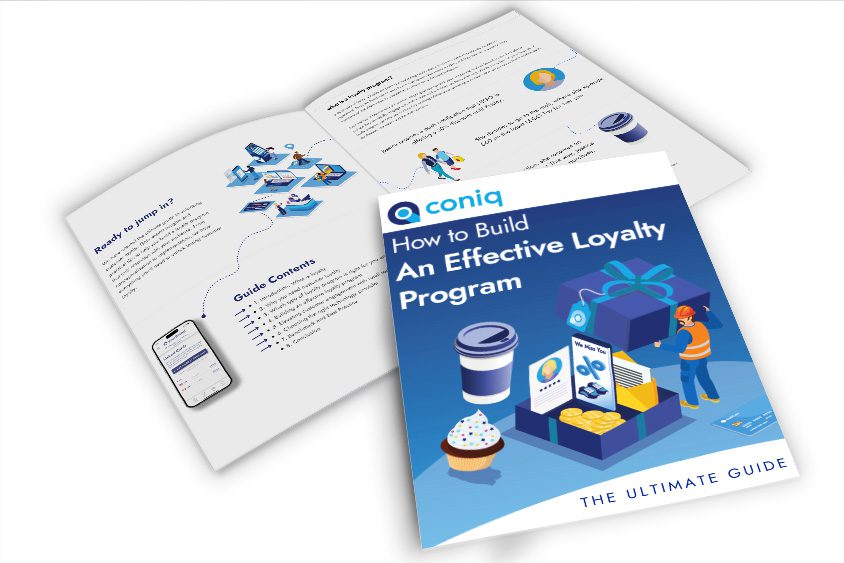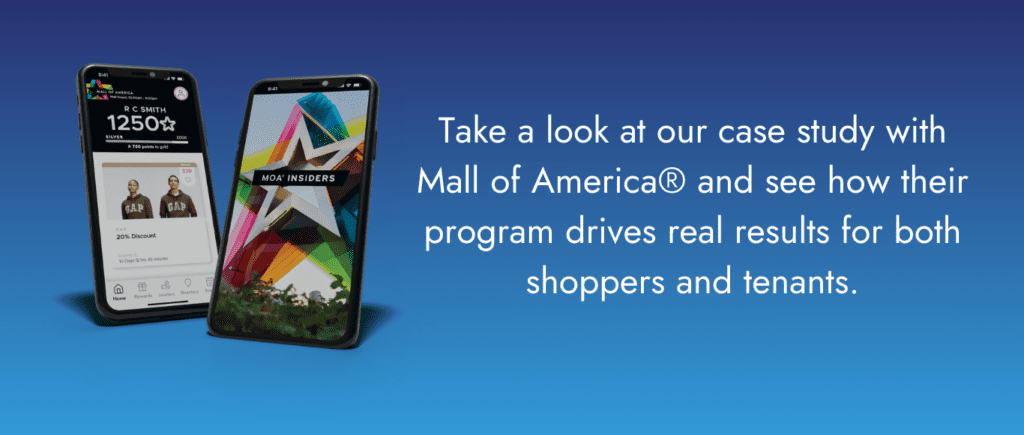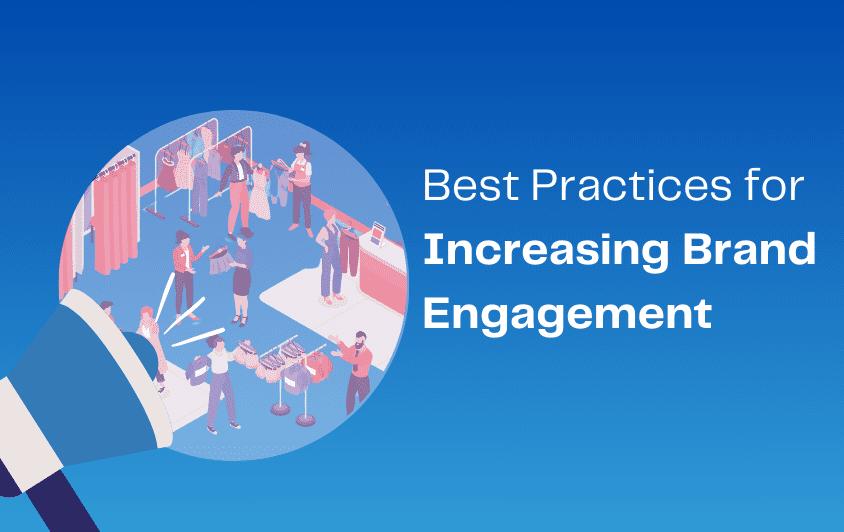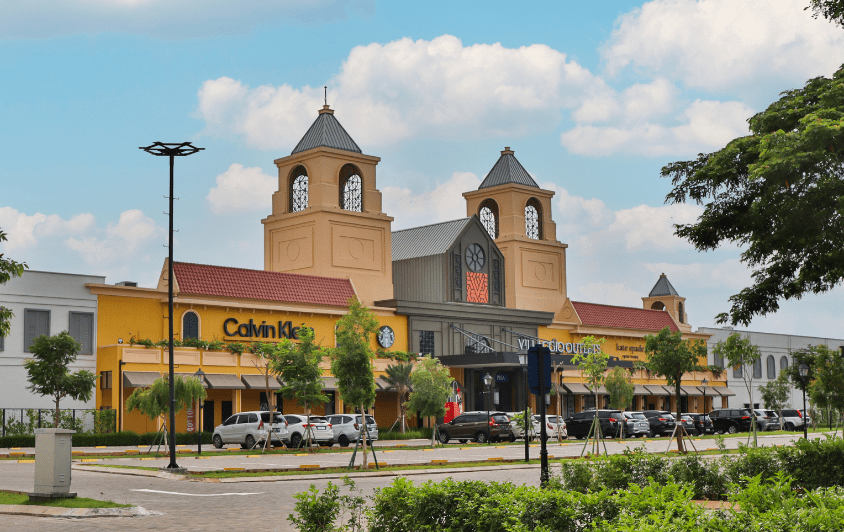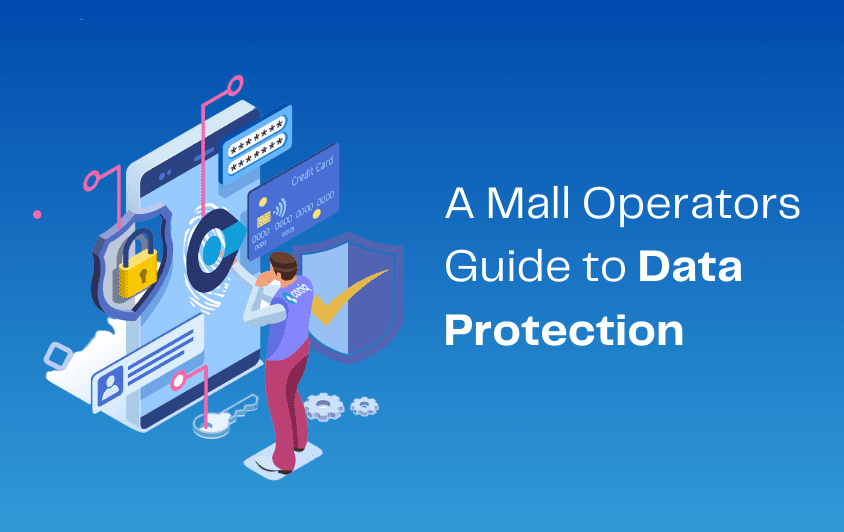Guide Contents
Introduction: How to Build an Effective Loyalty Program
The competitive retail landscape is growing YoY and new retail technologies are progressing in intelligence, affordability, and availability. With each advancement, it’s becoming more and more crucial for mall operators to drive customer loyalty and find unique ways to set themselves apart from their competitors.
To stand out from the crowd, mall operators must understand what their shoppers want, to successfully meet their needs. Collecting this information can be challenging, so many operators start small by collecting data through wifi forms or even in-store. However, the easiest and most efficient way to collect customer data and truly understand your shoppers is by leveraging an engagement platform. This way, you can make strategic decisions based on real-time data, that is not only measurable but actionable.
68% of consumers would join a customer loyalty program for a brand they like. Apply this to your entire shopping mall and you start to understand the impact that a loyalty program can have on customer engagement.
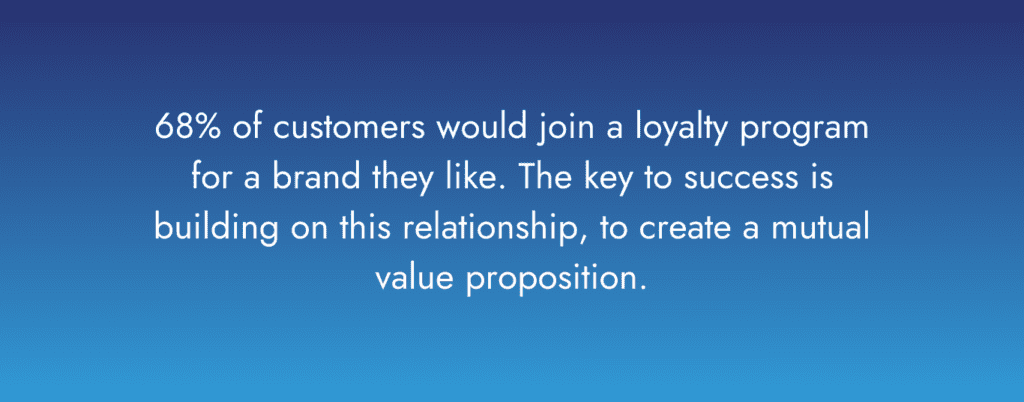
What is a Customer Loyalty Program?
In the simplest of forms, a customer loyalty program is a marketing tactic that a business uses to promote customer engagement. There are hundreds of ways to run a program, but many models will function as a paid or free ‘membership’ that offers value to a customer in return for a desired behavior.
There are lots of reasons why a customer might gravitate toward your shopping mall or brand in the first place. Perhaps they live locally, engage with mall events and activities, or have a strong affinity for a few of your brands. A loyalty program can help you nurture this existing relationship, creating a mutual value proposition that benefits both the shopper, the tenant and the mall operator.
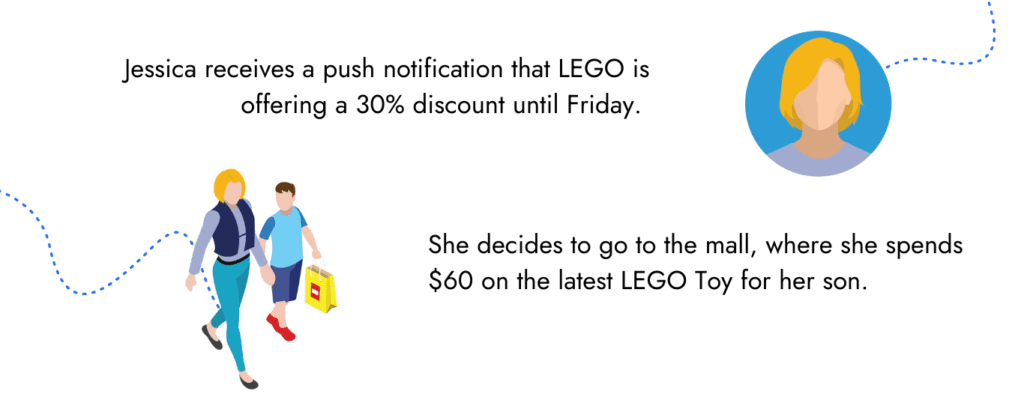

Why You Need Customer Loyalty
- Loyal customers are likely to spend more money and visit your destination more often.
- Insights into your customers’ habits (where they shop, how much they spend, how often they visit, their preferences!)
- A ready-made pool of marketable customers that you can directly communicate with
- Repeat customers cost far less than customer acquisition
- Recommendations from brand advocates will aid acquisition at no additional cost to you
- You will most definitely hold an edge over your competitors!
Creating Lasting Shopper Value
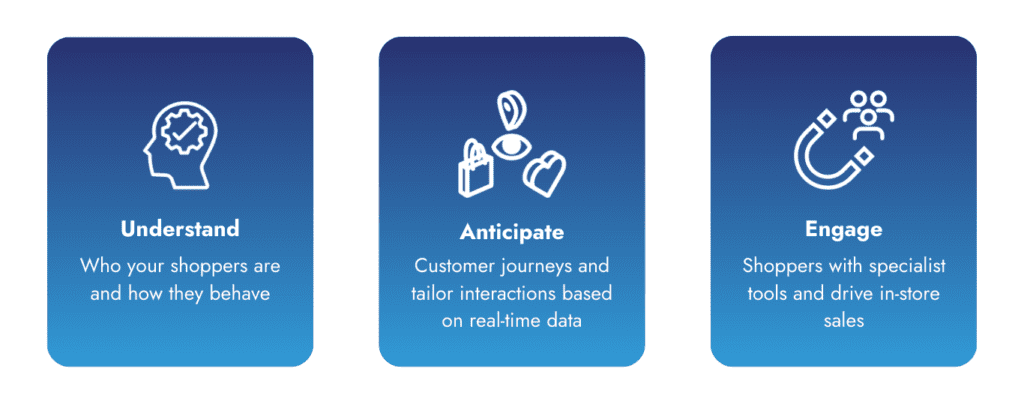
What are the Benefits for Shopping Malls?
From the above examples, we can see how a loyalty program can positively impact key business results and uplift customer engagement. It has been tried and tested by retail brands for decades, but how does this work within a shopping mall setting?
Malls aggregate multiple brands that wouldn’t traditionally share data. Nearly all retailers rely on data to measure success and plan campaigns. As a result, many retail brands have chosen to launch their own loyalty programs, to build their customer base, create unique shopping experiences, and foster deeper connections. There’s no denying that brands know their shoppers better than anyone! But do they know how their shoppers behave once they leave the store? The answer is no.
The difference with mall-operated loyalty programs is that they offer ‘blind spot’ information that retailers would not otherwise have access to, gathering widespread data across various touchpoints within the mall. This not only helps brands map out their spending demographic but also allows them to identify new customers or possible pitfalls in their marketing strategies.
Shopping mall loyalty programs enable brands to access deeper customer data such as where else their customers shop, their share of wallet in the center, average transaction value, and more. This adds significant value for tenants by providing information unavailable elsewhere. This allied approach to commercial retail can nurture landlord and tenant relationships, while most mall-wide programs complement existing brand loyalty programs by connecting the shopping experience and streamlining their customer journey.
Increased Acquisition and Retention
For any size business, acquiring new customers and creating strong brand affiliation is crucial right? In a setting where brands are in direct competition with others such as a shopping mall, new customers can be difficult to attract. When a new customer does walk into a store, you then need to keep them there and convert their visit into an even harder purchase!
Participating in a shopping mall loyalty program is a low-cost, low-risk opportunity for brands to gain exposure to new audiences, collect new data points, communicate more strategically, and boost engagement. These closed channels of communication are gold mines for relationship building and driving sales, but ultimately, you can only work with the data you have. Remember that having personal data is a privilege, so plan email or app interactions with care to deliver quality messages that add value to the customer experience.
The function of the US shopping mall has changed since its inception back in the 50s. Thanks to dining and entertainment provisions, the 21st-century mall now has the potential to be a ‘destination’ for the local community attracting visitors from far and wide. The promise of rewards, promotions, and exclusive benefits all make for appealing incentives to a consumer who will ultimately ‘need’ somewhere to shop, eat, and be entertained. A loyalty program takes it one step further by providing customers with memorable interactions and elevated experiences that delight and engage.
Revenue Uplift
In all of our customer case studies, we see an uplift in crucial areas for both mall operators and their tenants. By tapping into and acting upon customer data, loyalty programs repeatedly drive increased spend per customer and a higher average transaction value. Often, these figures are propelled even higher by loyalty marketing campaigns, which add elements of gamification increasing the length of stay and frequency of visit per customer.
Implementing a loyalty program provides the opportunity to understand how your customers are utilizing your mall. If they’re signed up, you’ll be able to track their interactions across your site. The ideal customer will shop, eat, and play during their visit and by understanding each interaction, you’ll be able to anticipate their actions. You can then act on this insight to either promote (incentivize or reward) the areas where you want to see better performance, target specific customer segments, or identify physical optimizations that will improve usage (perhaps by offering a coffee reward to a customer who is already on site- increasing their stay and their spend).
Consistent Customer Engagement
When a customer signs up for a loyalty program, they are permitting you to interact with them. Never underestimate the importance of this trust. In return for this consent, make sure that you’re providing something of value- i.e. relevant content that speaks to your audience.
With the right strategy, your customers will willingly engage with your mall and actively choose to make you their shopping destination of choice. Studies show that loyalty programs succeed when they’re easy to use and understand, and when they offer great discounts.
- Ensure that all of your customer touchpoints are straightforward and consistent across every channel (Yes, that means online, in-store, and apps!)
- Offer a smooth omnichannel experience that seamlessly links a customer’s online and in-store journey.
- Personalize at every opportunity. If you’re sending emails or push notifications, make sure you’re including offers that reflect your customers’ preferences.
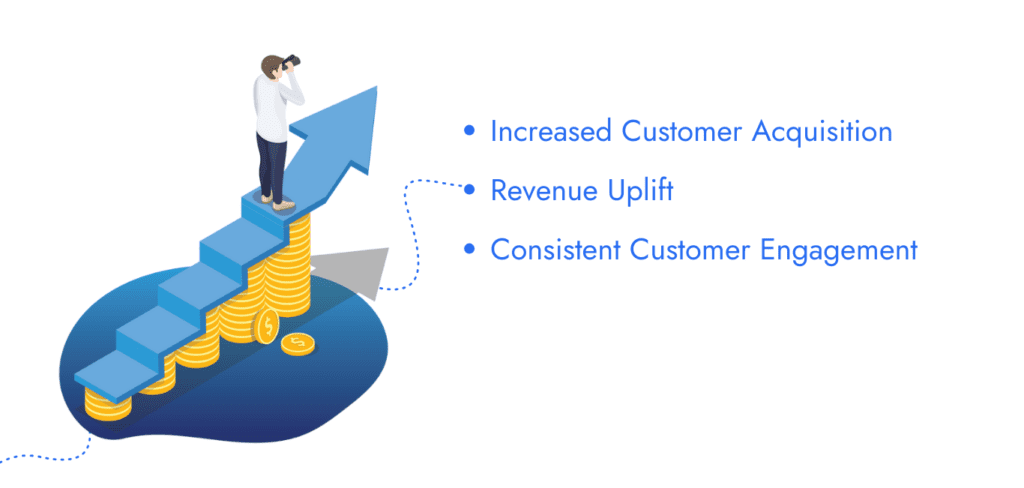
Which Type of Loyalty Program is Right for You and Your Visitors?
When designing a customer engagement program, it can be challenging to determine the most suitable model for your retail destination. That’s why Coniq has compiled a comprehensive overview of the primary types of loyalty programs, including their advantages, drawbacks, and how to optimize them for your shopping mall.
How you construct your program is up to you. It will mainly depend on:
- What business KPIs do you need your program to feed into – e.g., data collection, sales uplift, increased physical footfall, a rise in eCommerce orders, etc?
- How you can deploy the program – e.g., online, via app, physical touchpoints
- Your budget – anything is possible with unlimited funds, but what is feasible with the budget you have? (Note: Any mall operator can implement loyalty with little to no budget, just take a look at our blog to help)
Types of Loyalty Programs
Earn & Burn Programs
‘Earn and burn’ programs are one of the most popular types of loyalty programs, utilizing a transactional model that allows customers to collect points in-store and online each time they make a purchase. These points are then redeemed in exchange for rewards or discounts. Points can be earned in several ways including frequent spend; social media interaction; newsletter sign-ups, and prize draws. In effect, any form of customer engagement or desired interaction with a specific touchpoint generates an opportunity to collect points.
Earn and burn programs have stood the test of time and there’s more than one reason that they work so well for both vendor and customer. Here are some pros and cons for the earn-and-burn model.
Pros:
- They can be inexpensive to run, yet produce high-value incentives for customers
- Easy to implement and simple to manage with the right tools
- You can amass a customer database very quickly, especially if you incentivize sign-up with a generous starting bonus or points balance
- Promote increased brand engagement, spending, and visit frequency
Cons:
- You will hold some liability against the value of points that are stored in customer accounts
- Customers can easily lapse if rewards are too difficult to attain
Points-based programs are generally suitable for brands in the retail, hospitality, or FMCG categories. The nature of the products sold in these markets provides the perfect conditions to encourage repeat purchases and high volumes of traffic. Convenience or ‘need’ is often a driver for spending in these sectors, so brands that can offer a reward for purchases that are already perceived to be necessary will easily attract program members.
The added benefit of this program type is that customers feel that they have control of their reward choice. At McDonald’s, for example, customers can generally choose between different items at each point level.
Read our dedicated Earn and Burn blog for a deeper understanding >
Tiered Reward Programs
A tiered program enables customers to earn points or rewards for every purchase or action they take within the mall. Those rewards increase as they move up the tiered membership structure, providing higher value and benefits for customers who show increased engagement.
Generally, a tiered loyalty program will have a basic level of membership, plus exclusive levels that can only be accessed by customers who meet explicit criteria; for example, those that meet a set spend value, a defined purchase frequency, or other quantifiable behavior.
Pros:
- Bring a sense of exclusivity and luxury to your membership
- Incentivize specific customer behaviors to triple your value-per-customer rate
- Create real customer engagement with your most loyal customers by providing them with the highest-value rewards
- Can be cost-effective, as pricier rewards are only shared with those who have met your specific criteria
Cons:
- Requires a more complex implementation, with the need for accurate segmentation
- Some customers will never meet your upper-tier engagement criteria, which may exclude some revenue opportunities
- Potentially expensive to facilitate rewards in higher tiers
Retail destinations with multiple services and products can quickly and efficiently build attractive tiered programs. This type of loyalty model is great for boosting customer engagement in a shopping mall setting as each tier gives the member access to benefits that elevate their overall experience across the mall, encouraging repeat visits.
Subscription Loyalty Programs
Paid loyalty programs work by offering members exclusive rewards in exchange for a monthly or annual fee. These customers may pay to access higher tier levels or simply pay to be a member of the program, for example with a subscription model. Usually, paid programs offer members high-value rewards such as benefits they wouldn’t otherwise have access to, for example, luxury lounges or event tickets.
Pros:
- A guaranteed cash flow, regardless of how much engagement you have with a customer month-on-month
- The potential for deeply engaged customers due to VIP membership benefits
- Create leverage over competitors by offering exclusivity to your members
Cons:
- There are questions in the industry as to whether paid programs generate genuine customer loyalty in the long-term
- High customer expectations in return for their payment – can you repeatedly ensure they feel that their fee is justified?
Paid programs can be great for businesses that wish to refine their audience and build a database of high-value shoppers. Paid subscriptions are often seen as the premium choice in crowded markets, providing that the benefits to the customer are clear.
Learn more about the benefits of paid programs in our dedicated blog >
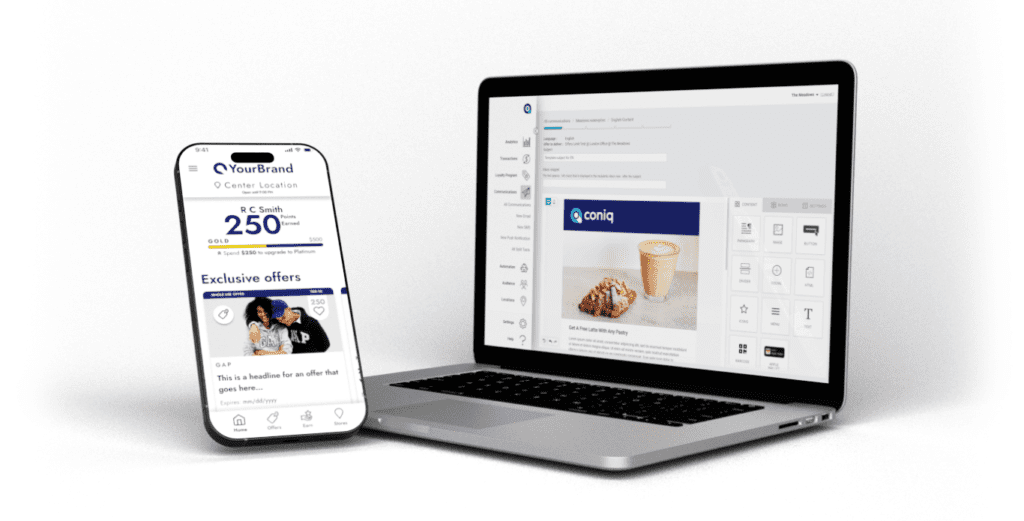
Coalition Programs
Coalition loyalty programs are the product of two or more brands coming together to form a shared loyalty proposition. Usually driven by spend, coalition programs allow customers to interact with multiple retailers, while earning points that can be redeemed against several brands.
Pros:
- Proven to increase footfall, dwell time, and spend
- Fuels your end-to-end customer engagement program
- Convenient for customers by encompassing one loyalty model across multiple vendors
- Builds a valuable database of customer information that can be used to make data-driven insights
- Combinations of popular brands will effortlessly drive member acquisition
- Can be inexpensive to run, as rewards are offered by participating brands
Cons:
- Complex to implement and manage internally without the right centralized technology or service provider
- May not increase metrics for a specific business within the coalition
Coalition programs are most commonly used by shopping malls as a method of uniting tenants and creating a rounded view of customer activity. Deploying a coalition program allows a mall to gain deep insights into footfall and spending behaviors, plus it provides the opportunity to further incentivize the use of mall-owned features and services.
Hybrid Programs
Quite simply, hybrid programs are the combination of two or more types of loyalty programs. For example, it is entirely possible to have a points-based, tiered program that offers an annual fee.
Pros:
- Potential to gain the highest level of customer information and insights
- Proven to drive high levels of engagement as there is something to suit everyone
- Allows you to pick and choose the best elements of every loyalty model
- Offers great flexibility for your customers
Cons:
- More complex than a single-method model
- Risk of customers being overwhelmed if the program is made too confusing
- Can be expensive to run and manage
Hybrid loyalty programs are suitable for most markets due to their versatility. Picking and choosing the desired elements from every possible loyalty model allows a company to control investment while accessing deeper customer insights.
It is important to note that loyalty programs only work if you’re creating a well-rounded experience for your customers. Customer engagement is your biggest asset and your greatest challenge. The best way to do this is to implement a solution that can understand and anticipate your shoppers while seamlessly integrating with existing technology.
Building An Effective Loyalty Program
Studies show that shopping malls that have a successful loyalty program grow their revenue 2.5x faster than their competitors, but the real challenge faced by mall operators is knowing how and when to implement them. In this article, we will guide you through the areas to consider when planning your loyalty proposition and outline the recommended steps to ensure you achieve the right loyalty program for your shopping mall.
Assess Your Shopping Mall
The first step towards building an effective customer engagement strategy is to understand your current position and to define where you’d like to end up. The deeper you can dive into the details of these start and finish points, the better you’ll be able to plan each stepping stone that creates the journey in between. This stage is entirely focused on looking at the data you already have, gaining a solid understanding of the value you provide your customers, and using this to identify any gaps.
Within this stage, you’ll need to consider your physical parameters, such as the geographical location and size of your mall(s). These factors directly impact your customer acquisition, engagement, and retention levels, which will help determine the style of loyalty program that works for your destination.
Analyze the services and spaces that you have available. Some loyalty programs will incorporate rewards such as free valet parking, a VIP lounge area, and secure shopping storage or ‘hands-free’ shopping. This stage allows you to understand whether you are optimizing your existing mall facilities. It’s also important at this point to look at what your competitors offer and how can you differentiate yourself.
Set Your Unique Goals
Most businesses will have several financial and engagement objectives that they aim to meet each year. For a shopping mall, these metrics allow you to measure your success, and identify key areas of improvement.
This can include:
- Overall footfall
- Total spend value
- Dwell time
- Customer acquisition
- Frequency of visit
Dive into what works well for your destination, understand what your customers already love about your mall, and how this could be optimized further. Are there areas that could be improved or that your competitors offer that you don’t? Once you have this information, you can begin tailoring your strategy to meet your unique goals.
What Do Your Shoppers Want?
Taking into account the above factors, consider what your customers look for when they visit your shopping mall.
The best way to do this is by using customer data to learn about their pain points, preferences, and shopping habits. Understand how your customers are utilizing your mall and what kind of incentives they would most likely utilize.
Today’s customers desire convenience, accessibility, and unique experiences that incentivize them to shop in-store, rather than online. Therefore, your loyalty program must deliver seamless omnichannel experiences that meet the needs and expectations of your customers.
Equally, you should also be looking at the type of program that would suit your customers, is it a simple earn-and-burn program where customers collect points for their purchases? Perhaps it’s a loyalty app with various tiered reward levels? Consider whether your program will be paid or free for customers. Who will provide the rewards? Will tenants submit offers or will rewards be provided through the mall itself?
Most of all, think about what kind of technology you would need to implement the above.
Things to think about:
- How do we define the success or failure of the program?
- How much information do we already have on our customers?
- What type of incentives would customers want to see in a loyalty program?
- How much budget do we have for implementation/outlay?
Look at Your Current CRM System
Look at how you already communicate with your customers, what kind of data do you already have? First-party data is essential for understanding your customers and delivering the levels of personalization your shoppers require. To learn more about first-party data read our whitepaper on building a database of ready-to-buy shoppers.
When implementing a loyalty program, it’s best practice to set up a comprehensive, organized database so that you have an expert handle on all of the customer data you hold. Loyalty programs are a great way to collect additional information on customer segments and collate this data in one, secure location.
Things to think about:
- How do you currently communicate with your customer base? (ie. physical marketing, email or app notifications)
- Is your data complete and up to date?
- What kind of first-party data are you collecting?
- How are you storing the data you have?
- Is it optimized to make data-driven insights?
- Are you handling your data in line with compliance laws?
Remember that the data you choose to collect must be compliant. You’ll need explicit permission from the customer to use certain data and you’ll need to store that information securely. Most successful loyalty programs will use customer data to understand and anticipate shopper behaviors. For example, where a customer shops, how much they spend, what they purchase, and how often. Understanding shopper preferences enables you to tailor your content, personalize your messaging, and create memorable experiences that ultimately drive customer visits.
Implementing an engagement platform allows you to sort, manage, and visualize your customer data in one secure location. This can be hugely beneficial, not just for mall operators but can add significant value for your retail tenants too. Utilizing data dashboards and reports simplifies data-driven decision-making and enables all stakeholders to customize their engagement strategy.
Customers want more from their shopping experiences now than ever before. They expect you to know what they like and how to please them. The key to success here is ensuring you have the appropriate tools and technologies in place to implement a successful strategy.
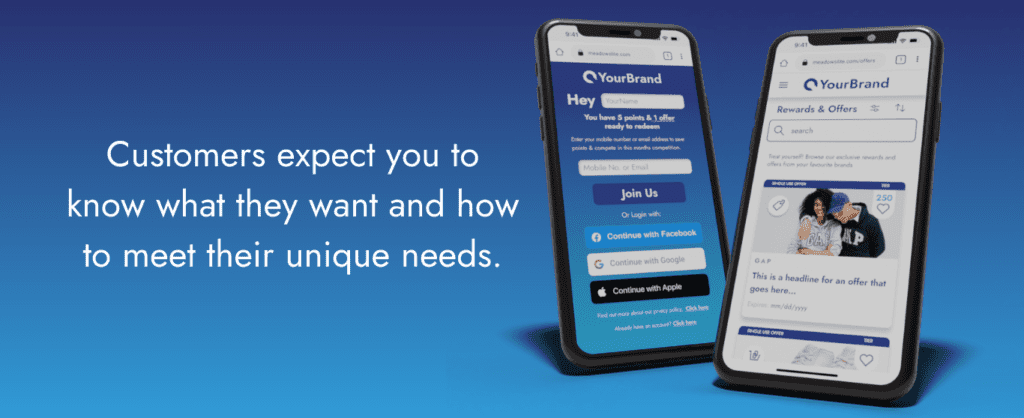
Elevate Your Engagement Strategy with Retail Technologies
Regardless of the size and configuration of your shopping mall, every shopping destination aspires to enhance customer engagement, doesn’t it? Achieving this goal involves the implementation of engagement solutions and loyalty programs, all of which require some form of retail technology for execution. Undeniably, those who adopt a broader range of innovative technologies will experience a positive influence on the success of their program. These technologies aren’t merely nice-to-haves; instead, they represent strategic decisions that directly contribute to the return on investment (ROI) of a program and on customer engagement.
What Role Does Technology Play in a Loyalty Program?
Good question, the answer is simple- it’s about Knowledge.
Knowing your customers, and understanding how to engage them, all comes down to data and the information you collect using the technologies you have available to you.
Why you need to invest in the right technology:
- Enhance customer experience and useability, which in turn increases engagement
- Implement the tools to collect, manage, and understand customer data
- Improve how you communicate with your customers, to nurture better relationships
There are various types of technology on the market, all of which can be combined to create a highly successful loyalty program that drives real results. Examples of technology features available include, but are not limited to:
- Geo-fences – tracks the movements of individual customers
- Receipt scanning – encourages engagement after the point of purchase
- Gamification – influences behavior change and habit formation
- Physical scanners – facilitates a super simple customer journey at POS
- Push notifications – communicate with customers in real-time
- Card-linking – allows customers to link payment cards to automatically earn rewards as they spend
- Digital wallets – create a secure space for your customers to collate the points they earn
As seen within discussions at MAPIC’s 2023 Retail Outlet Conference, several key trends for 2024 will continue to develop at speed thanks to profound global consumer demand. Expectations for the retail sector to focus on sustainability, changing customer habits, retailtainment, and AI, will fuel the arrival of new and optimized retail technologies.
Data Capture
Capturing first-party data directly from your customers is the ultimate aim when it comes to customer engagement. Understanding the needs and behaviors of your customers is essential for engagement, (e.g. customer preferences, transaction history, and demographic profile will allow you to understand your shoppers at a deeper level) enabling you to shape your interactions with them. However, targeting the right customers, with the right content at the right time requires the right technology…
Data capture can start with simple actions such as monitoring social media pages and providing an email newsletter opt-in. More advanced technologies include a fully automated CRM function with a platform that collects data at every touchpoint, tailoring rewards, and features that accurately track activity undertaken within a mall.
Personalization and AI
Personalization is a necessity when it comes to meeting the needs of your shoppers. McKinsey conducted a study in 2021 that confirmed personalization directly influences buying behavior across the customer lifecycle. In fact, 76% of consumers are more likely to purchase from a brand that personalizes their experience and those that do see a substantial uplift in repeat custom and customer satisfaction. Therefore, creating an effective personalization strategy comes down to, you guessed it, utilizing the data you’ve captured.
The right technology can help you simply collect customer data, at various touchpoints along the shopper journey. 65% of shoppers say they’d share their data for value-adding personalization, for example, tailored recommendations, discounts, and special offers based on previous purchases or birthday and anniversary gifts. Coniq’s Journey Builder gives users access to a visual decision tree that identifies the best way to interact with shoppers based on their behavior. This tool delivers exclusive offers and discounts to those most likely to utilize them, along with personalized communications and notification triggers. Lean on AI and machine learning technologies to help you predict new trends, generate fast, personalized responses to customer queries, and create personalized emails using AI email builders.
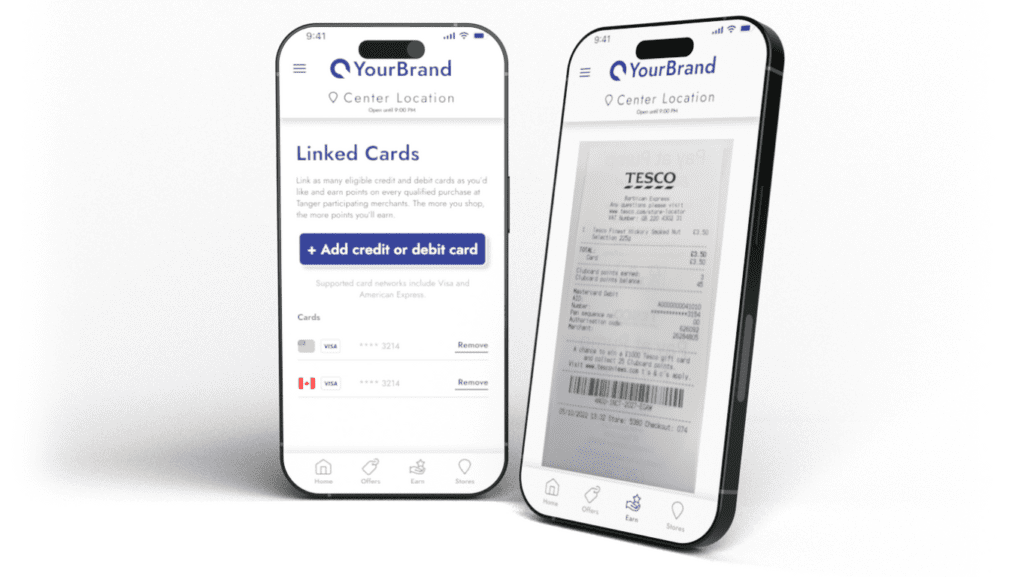
Gamification
Gamification is the practice of adding typical gaming features and functions to non-gaming contexts (e.g. point scoring, competitions, or rules of play). Typically this is used as an online marketing technique to enhance engagement with a product or service.
There are hundreds of ways to gamify your loyalty program, both online and inside your shopping mall. Building in functions such as leaderboards, streaks, extra points collection opportunities, prize draw competitions, and friends and family features, will encourage users to interact with your program regularly. Essentially, integrating elements of ‘fun’ can motivate and encourage desired behaviors in your shoppers.
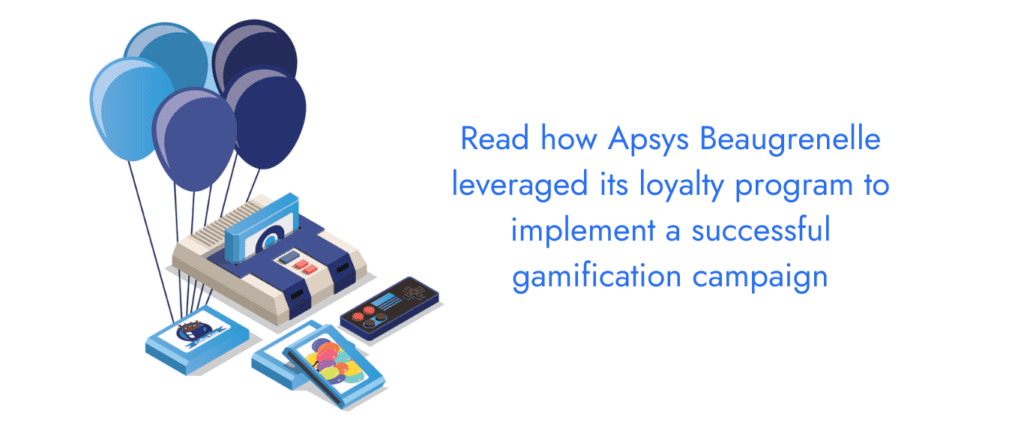
Choosing the Right Technology Provider
Choosing the right technologies on which to build your core program is the first hurdle, and understanding how technology-based features such as those highlighted above can be integrated is an important factor in your decision.
Now that you have designed a concept for your program and understand what you need to produce to meet your core objectives, you can begin thinking about how to bring it to life. There are two routes to consider at the initial stage:
Build a Custom Solution
Building a custom solution with an in-house development team is often seen as an appealing way to create a unique offering. However, the pros and cons should be carefully considered.
Pros:
- Tailored to your specific use case with the opportunity for unique functionality
- Complete control over every element
- Full control and responsibility for managing customer data
Cons:
- High initial cost to build from the ground up (takes time)
- The ongoing cost to maintain, update, and upgrade the solution
- High risk of failure as building is not a core strength (For example, in the case of Mall Operators)
- Risk of creating a static product that will lose its relevancy over time
- Full liability for secure data management
- Lack of industry insights and best practices
- Lack of infrastructure to review ongoing performance, maintenance and improvements over time
- The full build and test cycle will take a considerable amount of time
- Very difficult to pivot should the results fall short of expectation
Implement an Off-The-Shelf Solution
The second option is to benefit from a pre-established solution while also working with a supplier that is entirely dedicated to fulfilling your industry’s unique needs. This enables you to capitalize on valuable insights and industry best practices while receiving significant cost advantages.
Pros:
- Tried and tested formulas that have been optimized over time to provide the best functions and experience
- Usually much quicker (and often cheaper) to implement
- Ongoing support and maintenance from an external team
- Modular solutions allow for extra functionality to be integrated at any time
- Increased customization and functionality
- Tailored expertise relevant to your industry
- Constant, up-to-date innovation & industry knowledge
- Learn from global leaders, leverage their experience and benchmark industry success
- Specialized providers are essential for creating exceptional customer experiences, especially in a Mall environment where generic experiences are insufficient
Cons:
- Will a plug-and-play solution fit all of your needs?
- Will you be too dependent on an external source?
- Ongoing license costs could increase over time
These are just some of the topics to consider at this stage of your loyalty program creation. To aid the decision-making process, we’ve created a handy whitepaper that delves into more detail on each solution.
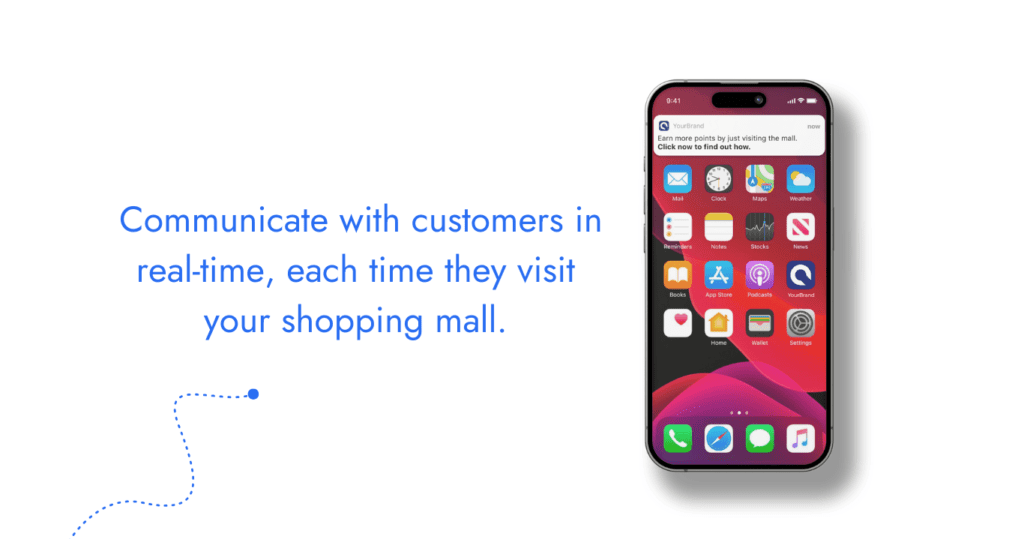
Benchmarking & Best Practices
Avoiding Common Loyalty Program Pitfalls
We already know that shopping malls with successful loyalty programs grow their revenue 2.5x faster than their competitors.
However, not all programs are successful. So, what makes a successful loyalty program? Creating a program that delivers substantial value to your customers is just the beginning; consistent monitoring, market research, benchmarking against industry leaders, and staying on top of emerging trends are crucial steps to avoid common pitfalls.
Shopping mall loyalty programs exist to serve three main objectives:
- To increase performance metrics such as foot traffic and spend
- To reward shopper loyalty and create sustained engagement
- To build a profile of customers, by collecting customer data
Start by understanding and addressing customer pain points and encouraging feedback. This will help you build a program that speaks directly to your customers. Once you have a better understanding of how to meet their needs, do your market research, and ask yourself:
- What’s trending in the industry at the moment?
- What are other industry players doing that I’m not?
- What matters to my customers?
Just starting out? Read our recent blog on how to build an effective strategy from the beginning >
5 Best Practices for Shopping Malls
There are lots of ways to make a loyalty program successful, and this can seem overwhelming if you are just starting. That’s why it’s important to remember a few fundamental best practices to help you get the most out of your solution.
- Take an omnichannel approach: Malls can seamlessly implement omnichannel experiences, combining in-store and online initiatives for a holistic customer engagement solution that engages customers no matter where they are (e.g. in-store, or at home!)
- Build a sustainable solution – Create a program that will withstand the test of time! Consider the future of your program, how it will evolve, and what steps you need to take to make this a sustainable feature of your shopping mall. Evaluate the resources you can reasonably allocate to the program, and assess whether it incorporates center-wide offers, or if rewards are exclusively contributed by tenants. This will help you build a durable program that works for you, not against you.
- Know your customers inside out – Personalization is a key tactic in loyalty program success. Utilize customer data for personalization, address individual preferences, and enhance customer and tenant experiences.
- Follow a solid marketing strategy – Actively use first-party customer data to drive engagement through multiple personalized touchpoints across physical and digital channels. Utilize your channels to actively inform, educate, and convert customers. We’re talking email newsletters; social media campaigns; white-label apps; targeted ads or press releases. Communication is key!
- Benchmark, optimize, and futureproof – Define clear goals for your loyalty program, outlining what success looks like for your specific objectives. Initiate thorough market research to identify valuable insights from other retail destinations. Investing in understanding the broader market landscape is crucial to prevent complacency and stay ahead of industry trends. Regularly optimize your loyalty program to avoid the necessity for costly, large-scale corrections. This approach enables you to continuously assess and fine-tune your program, ensuring it consistently exceeds expectations and delights shoppers in the long term. By staying agile and responsive, your loyalty program can remain a dynamic and effective tool for enhancing customer engagement and loyalty.
Common Loyalty Program Mistakes
Mistakes can be costly if you don’t know what to watch out for. Let’s take a look at six of the most common mistakes:
- Improper planning – Before you do anything else, you need to take time to thoroughly understand your situation. Set specific goals for your program, analyze existing data and consider your customer pain points.
- Over complication – Start simple. Don’t get carried away with complex tiers or several calls to action. You don’t want to confuse your customers before they have left the starting line. Choose a program type to suit your capabilities, you’ll be more likely to engage customers if the program is convenient and easy to follow.
- Underestimating the role of technology – How are you going to create this program? Are you going to build it internally or source a third-party provider? Customers are demanding more from retail destinations than ever before, so whatever you decide your program MUST embrace the latest technologies and ensure you deliver a seamless customer experience.
- Neglecting your data – User insights are not ‘nice-to-haves’ but form an essential pillar for program optimization. Customer data will tell you how your shoppers are feeling, what works for them, and identify areas that require attention.
- Complacency – Stay on top of the trends, strategies, and technologies that are shaping the industry. It’s important to monitor your program performance and optimize accordingly to stay ahead of your competition and avoid complacency.
Read our dedicated blog on how to avoid loyalty program failure >
Conclusion
Now that you’ve navigated through all the essential steps to craft your own successful loyalty program, it’s evident that developing an effective loyalty initiative is crucial for creating deeper connections with customers in today’s competitive retail landscape. As highlighted in the introduction, loyalty goes beyond mere revenue generation but establishes emotional bonds with shoppers that significantly impact customer retention, brand advocacy, and market differentiation.
Therefore, a successful loyalty program is a combination of thoughtful strategy, innovative technology, and staying up-to-date with industry trends. By investing in these components, shopping malls can not only delight customers with unique and exciting experiences but also pave the way for sustainable growth. In the ever-evolving retail landscape, embracing the principles outlined in this whitepaper will provide the basics for designing and implementing a successful loyalty initiative.

